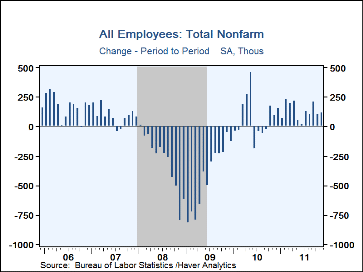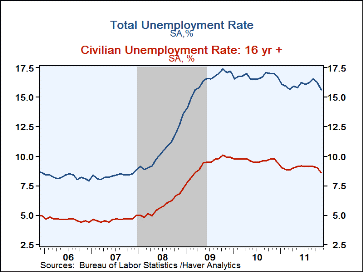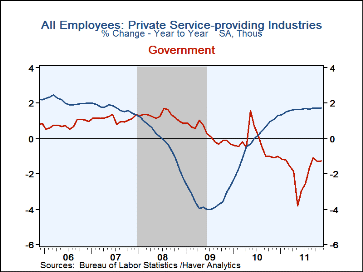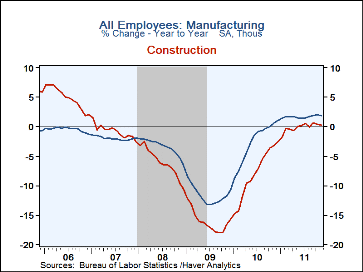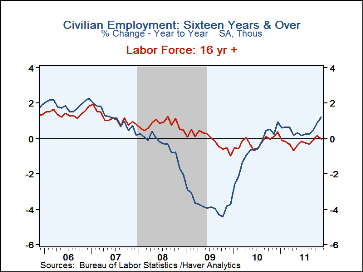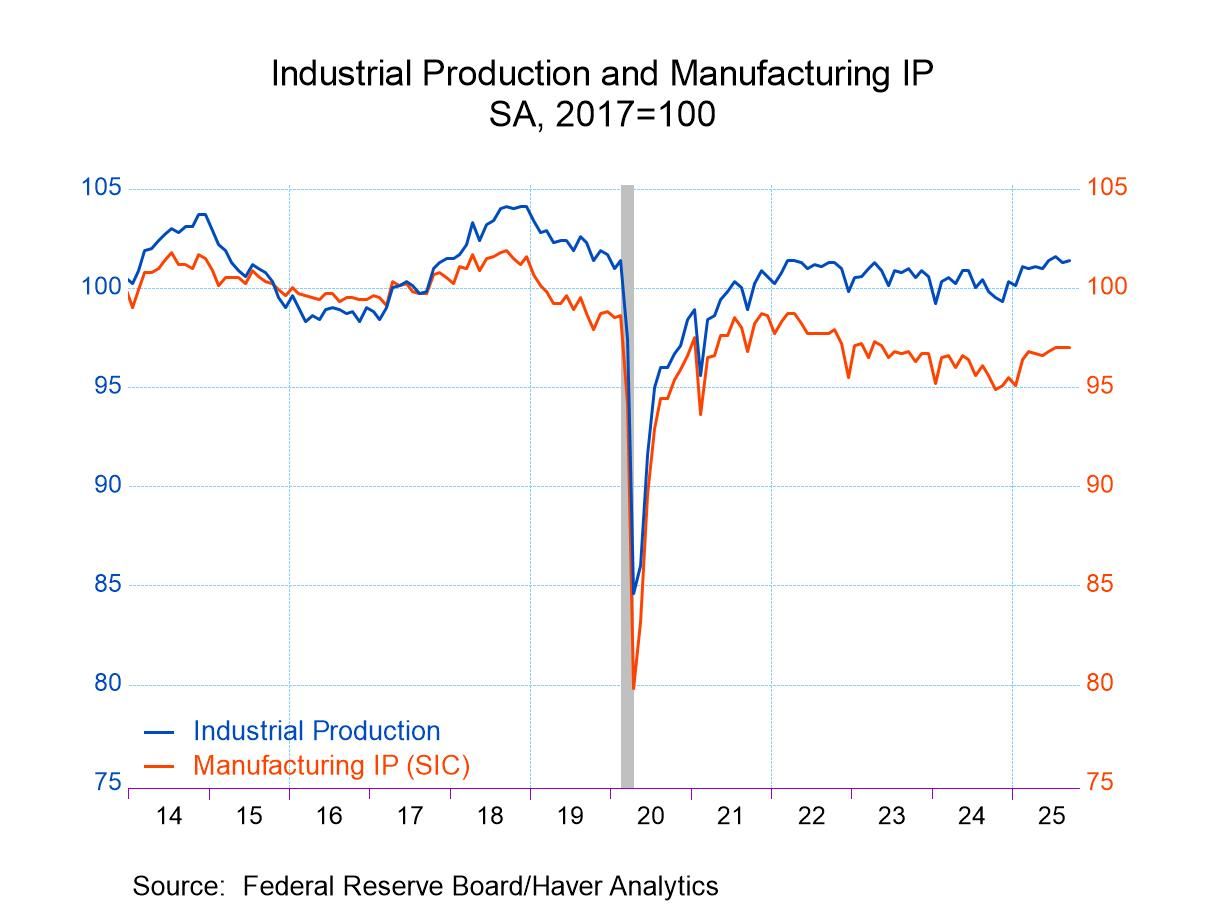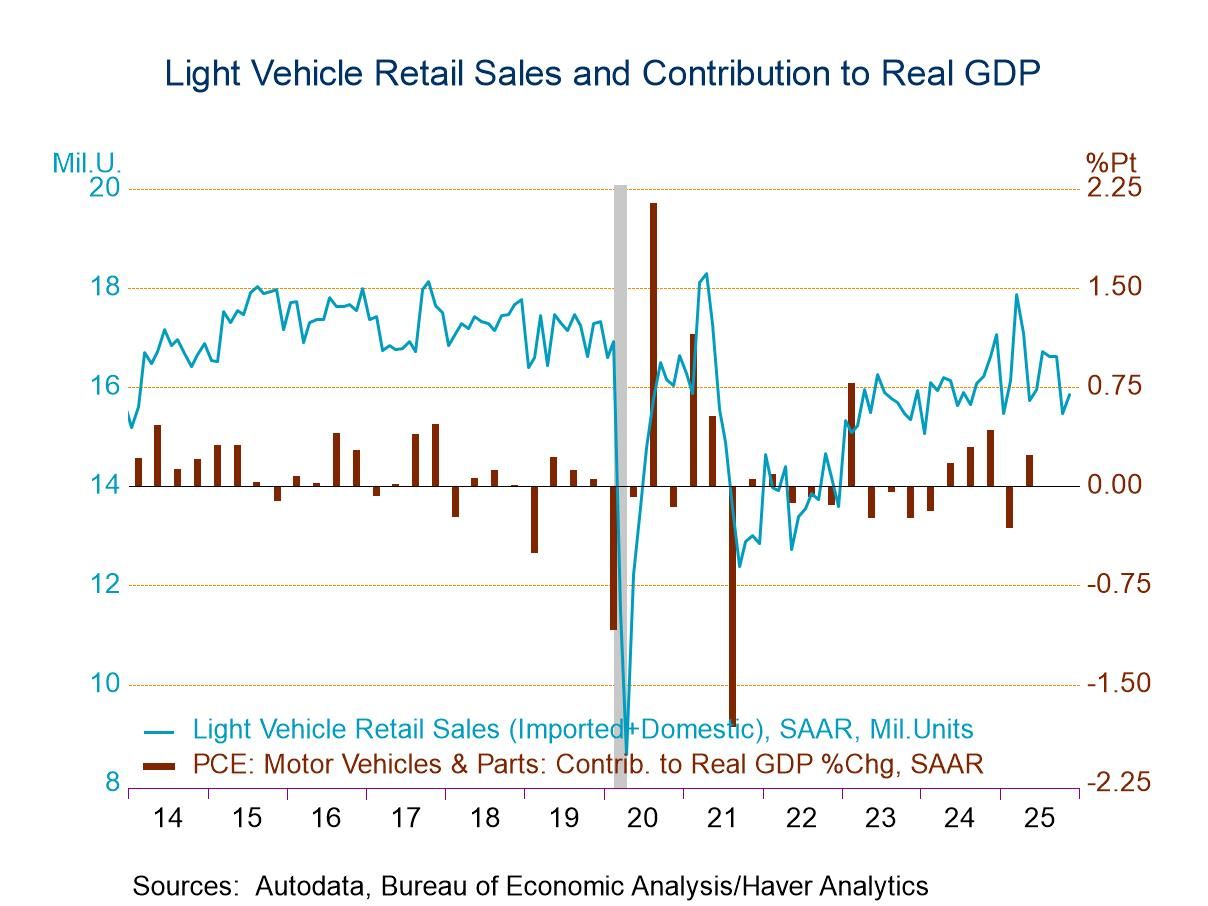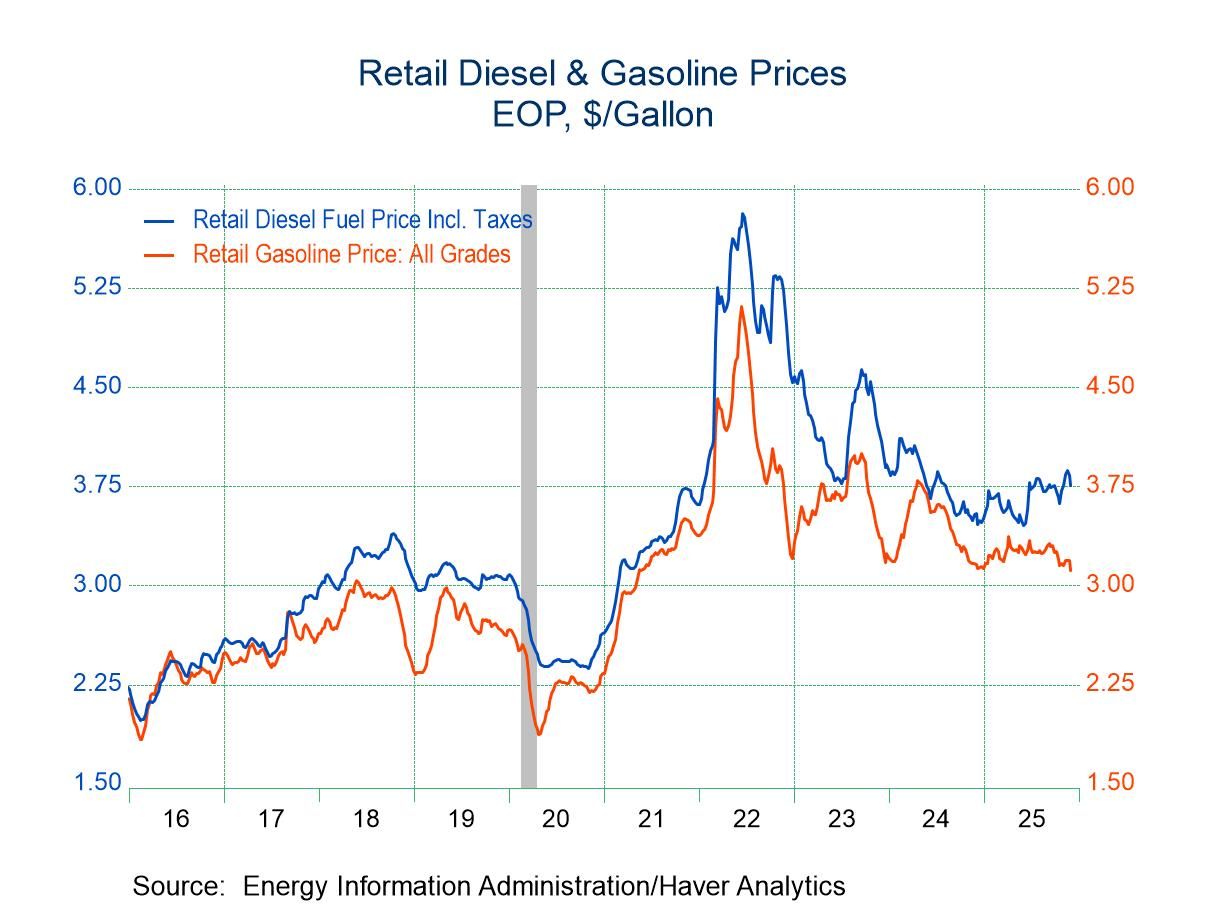 Global| Dec 02 2011
Global| Dec 02 2011U.S. Nonfarm Payrolls Grow Moderately As Jobless Rate Falls
by:Tom Moeller
|in:Economy in Brief
Summary
The labor market continued its moderate improvement during November. Nonfarm payrolls grew 120,000 and the prior two months were revised up. Consensus expectations had been for a 125,000 increase in jobs last month. Despite the gains, [...]
The labor market continued its moderate improvement during November. Nonfarm payrolls grew 120,000 and the prior two months were revised up. Consensus expectations had been for a 125,000 increase in jobs last month. Despite the gains, these increases are still modest by the standards of past economic recoveries. Moreover, they remain weaker than the increases from February-to-April of this year. The unemployment rate fell sharply to 8.6%, the lowest level since March, 2009. Consensus expectations were for a 9.0% rate last month.
From the establishment survey, nonfarm payrolls increased 120,000 during November. The rise followed gains of 100,000 and 210,000 in October and September, revised from 80,000 and 158,000. Continuing to lead job growth was the private service sector where payrolls rose 146,000 (1.7% y/y). Retail jobs increased 49,800 (12.6% y/y). Professional & business services rose 33,000 (3.1% y/y), of which temporary jobs rose 22,300 (7.8% y/y). Education & health services also rose another, firm 27,000 (2.1% y/y) and leisure & hospitality jobs grew 22,000 (1.9% y/y). A 4,000 (-2.0% y/y) worker decline in information jobs offset these increases somewhat. Factory sector jobs ticked up 2,000 (1.8% y/y) while construction employment fell 12,000 (+0.3% y/y) held back by another decline in nondurables. Efforts to reduce budget deficits lowered government sector payrolls. The total number of public sector jobs dropped 20,000 (-1.4% y/y) led by an 11,000 (-1.3% y/y) decline in local, a 5,000 decline in state (-1.4% y/y) and a 4,000 drop in federal (-0.9% y/y) employment.
The length of the workweek remained at 34.3 hours; thus, the index of aggregate hours rose just 0.1% for the second month. For Q4 so far, the index is up at a 1.9% annual rate from Q3.
Overall, 60.7% of industries added jobs during November and 61.4% increased employment during the last six months. The breath of job gain has been far lower in the factory sector where just 51.9% raised employment over the last month but 59.3% have during the last six.
Average hourly earnings ticked up just 0.1% (1.6% y/y). In goods producing industries, earnings rose 1.5% y/y while in private service industries they rose 1.6% y/y. Education & health service industries led the gain with a 2.4% y/y increase and information services also posted a strong 1.9% y/y rise.
From the household survey, the unemployment rate slipped to 8.6% reflecting a 278,000 increase (1.2% y/y) in employment and a 315,000 decline (-0.0% y/y) in the labor force. The overall unemployment rate including marginally attached workers and those working part time for economic reasons fell to 15.6%, down from its high two years ago of 17.4%. The average duration of unemployment rose to 40.9 weeks. Within the labor force, the number of individuals not included who currently want a job rose 5.6% y/y.
The figures referenced above are available in Haver's USECON database. Additional detail can be found in the LABOR and in the EMPL databases. The expectation figures are from Action Economics and are in the AS1REPNA database.
| Employment: (M/M Chg., 000s) | Nov | Oct | Sep | Y/Y | 2010 | 2009 | 2008 |
|---|---|---|---|---|---|---|---|
| Payroll Employment | 120 | 100 | 210 | 1.2% | -0.7% | -4.4% | -0.6% |
| Previous | -- | 80 | 158 | -- | -- | -- | -- |
| Manufacturing | 2 | 6 | -1 | 1.8 | -2.7 | -11.6 | -3.4 |
| Construction | -12 | -15 | 31 | 0.3 | -8.1 | -16.0 | -6.1 |
| Private Service Producing | 146 | 121 | 184 | 1.7 | -0.1 | -3.5 | -0.2 |
| Government | -20 | -17 | -10 | -1.2 | -0.3 | 0.3 | 1.3 |
| Average Weekly Hours | 34.3 | 34.3 | 34.3 | 34.2 (Nov.'10) |
34.1 | 33.9 | 34.5 |
| Average Hourly Earnings (%) | 0.1 | 0.2 | 0.1 | 1.6 | 2.4 | 3.0 | 3.8 |
| Unemployment Rate(%) | 8.6 | 9.0 | 9.1 | 9.7 (Nov.'10) |
9.6 | 9.3 | 5.8 |
Tom Moeller
AuthorMore in Author Profile »Prior to joining Haver Analytics in 2000, Mr. Moeller worked as the Economist at Chancellor Capital Management from 1985 to 1999. There, he developed comprehensive economic forecasts and interpreted economic data for equity and fixed income portfolio managers. Also at Chancellor, Mr. Moeller worked as an equity analyst and was responsible for researching and rating companies in the economically sensitive automobile and housing industries for investment in Chancellor’s equity portfolio. Prior to joining Chancellor, Mr. Moeller was an Economist at Citibank from 1979 to 1984. He also analyzed pricing behavior in the metals industry for the Council on Wage and Price Stability in Washington, D.C. In 1999, Mr. Moeller received the award for most accurate forecast from the Forecasters' Club of New York. From 1990 to 1992 he was President of the New York Association for Business Economists. Mr. Moeller earned an M.B.A. in Finance from Fordham University, where he graduated in 1987. He holds a Bachelor of Arts in Economics from George Washington University.


